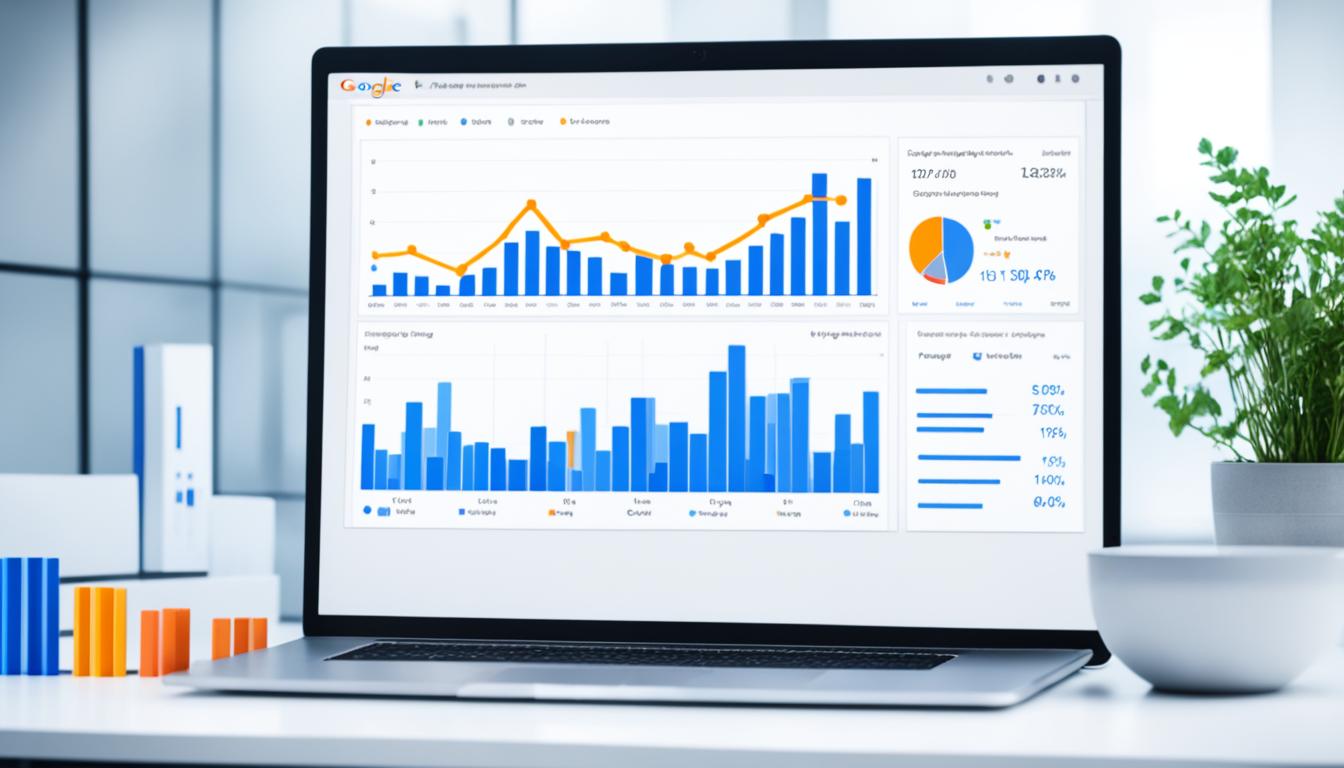Rental property analytics has revolutionized how landlords make decisions. Google Analytics is a powerful service from Google that puts these insights at your fingertips. It helps you watch and learn from your website’s visitors, turning raw data into actionable property insights. For owners of long-term rental properties, it’s key. By connecting it with sites like Airbnb and Vrbo, you can track visitor behavior and understand how people interact with your listings. This can significantly boost your conversion rates from browsing to booking.
Getting started is easy. You just need a Google Analytics account and a tracking ID. Then, you put it in your website’s booking system. Uplisting makes this connection easy. It helps you smoothly send your data to Google Analytics.
Key Takeaways
- Google Analytics is essential for monitoring website performance and visitor interactions.
- Integrating Google Analytics with platforms like Airbnb and Vrbo optimizes the booking funnel.
- Creating an account and embedding a tracking ID are initial steps for data tracking.
- Uplisting simplifies the Google Analytics integration process for long-term rentals.
- Effective data tracking allows comprehensive analysis and enhanced rental property performance.
Understanding Google Analytics for Long-Term Rentals
Google Analytics is a tool for tracking your website’s performance closely. It shows you how visitors act and helps you see what changes make them stay longer, like by improving campaign tracking. This is key for anyone renting out places for long periods.
What is Google Analytics?
Simply put, Google Analytics tells you how your site is doing. It looks at what visitors do and shows who they are. By understanding this, you can make your website work better for them. This means more visitors stay and look at more pages.
Benefits for Rental Property Owners
Owners of places where people rent long term find Google Analytics very helpful. Here’s why:
- Conversion tracking shows where you’re losing people in the booking process.
- With real-time data, you can see how new marketing efforts are doing right away.
- Detailed audience insights help you make marketing that talks directly to your visitors. This makes their time on your site better.
- Looking at user behavior shows what parts of your site need work. Making these areas better can help rent out your place more often.
Setting Up Google Analytics for Your Rental Website
Google Analytics is key for rental property owners to improve their website. Start by opening a free account and getting a unique tracking ID. This ID helps you watch your website’s traffic and activity closely.
Creating a Free Google Analytics Account
First, go to the Google Analytics site and make an account for free. You’ll need to provide some details about your rental site. After signing up, you’ll get a special tracking ID for monitoring your website’s activity.
Implementing Tracking IDs
Adding the tracking ID to your site is a big step. You must insert a code into your site’s pages. Then, every visit to your site is tracked, letting you analyze your site’s performance. With this setup, Google Analytics gathers all the important data for you.
Choosing Direct Booking Engine Integrations
It’s also important to pick the right direct booking engine integration. Options like Uplisting make it easy to collect data across your rental platforms for Google Analytics. This tool helps combine tracking data, giving you a clear look at all your channels. Good integration means you can do better, more detailed analysis for your rental site.
Key Metrics to Track for Rental Websites
Running a rental website means using data smartly. By watching key numbers, you can make your site work better.
Audience Insights
Getting to know your audience well is a must for improving your site. Use the analytics dashboard to learn about your visitors. You can see who they are and how they use your site. This lets you adjust your content to fit their needs.
Traffic Sources
The analytics dashboard helps you see where your visitors come from. You’ll find out if it’s through search engines, links from other sites, ads, or they type your URL directly. This knowledge can refine your marketing, showing you what works best.
Conversion Tracking
When monitoring bookings, it’s crucial to see where customers may be getting stuck. Keeping an eye on conversion rates shows you which areas need improvement. This way, you can fix any problems and make booking easier, which should lead to more people finishing the process.
User Behavior
Understanding how visitors use your website is key. Bounce rates and how many pages they look at give you an idea of their interest. By tracking specific events, you can see where improvements are needed to keep users engaged. Visual data will guide these changes, making your site more user-friendly and effective.
Advanced Analytics Tools: Funnels and Ecommerce Goals
Using advanced analytics tools is key for deep data interpretation and hitting e-commerce revenue goals. These tools let you see customer paths clearly and track financial targets closely. This allows site owners to make their sites better and raise the number of sales.
Setting Up Funnels
Funnels show each step that leads to a booking. By breaking down the booking journey, site owners can spot where customers might lose interest. They can then focus on these areas to make more meaningful goal setting. Example steps in a funnel are exploring listings, checking property details, starting contact, and booking.
Tracking Ecommerce Revenue Goals
It’s crucial to track e-commerce revenue goals to hit money targets like what one booking brings in. This info shows how website changes affect money made. Owners can use this to tweak what they’re doing, making sure every visitor helps grow the earnings.
| Metrics | Insights |
|---|---|
| Conversion Rate | Percentage of visitors who complete a booking |
| Average Booking Value | Amount of money made per booking on average |
| Funnel Drop-off Points | Where customers usually stop in the booking process |
With these powerful tools for data interpretation and goal setting, site owners can turn their sites into effective platforms. They will not just bring in visitors but turn them into customers, bringing in more revenue.
Understanding the Differences: Google Analytics vs. Privacy-Focused Tools
In today’s world, knowing the difference between regular analytics and those that focus on privacy is key. When you look at Google Analytics against Plausible Analytics, you see big changes in how data is handled. This is very important for people who own rental properties.
Google Analytics Overview
Google Analytics is famous for its detailed insights into user activities, audience data, and conversion metrics. Yet, it gathers a lot of data, which might worry you about privacy. With its use of cookies and data collection, Google Analytics requires you to dive into its privacy policy. You need to do this to be compliant with rules like GDPR. Despite being complex, it offers deep insights to help better your rental website’s performance.
Plausible Analytics Overview
Plausible Analytics is a different kind of choice. It centers on keeping data handling clear and respects user privacy. This open-source tool doesn’t use cookies or collect personal information. That makes it a good pick for following GDPR rules. Its simple stance on privacy is attractive for those wanting to protect user data while still getting important usage data. Plus, by allowing self-hosting, it puts the data fully in your hands. This boosts its role as a tool focused on privacy.
You might go for Google Analytics due to its detailed tracking, or Plausible Analytics for its privacy-first stance. Knowing the choices will guide you to make a smart choice as a rental property owner. Your pick should mirror your specific aims and principles.




